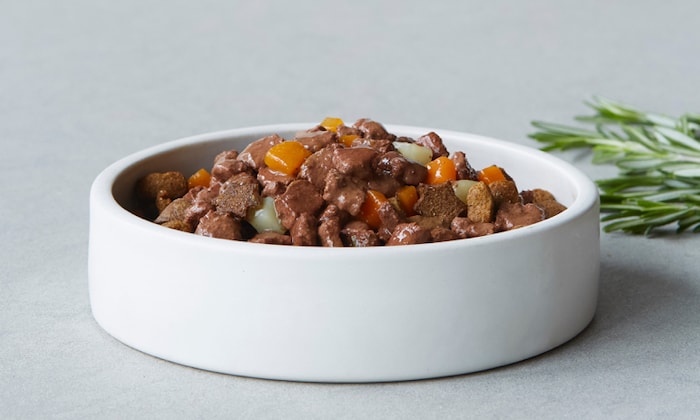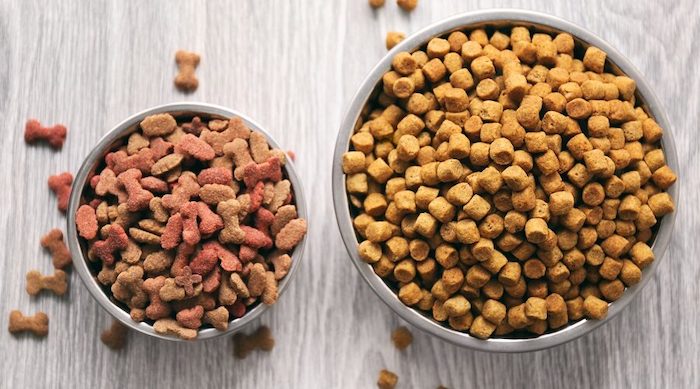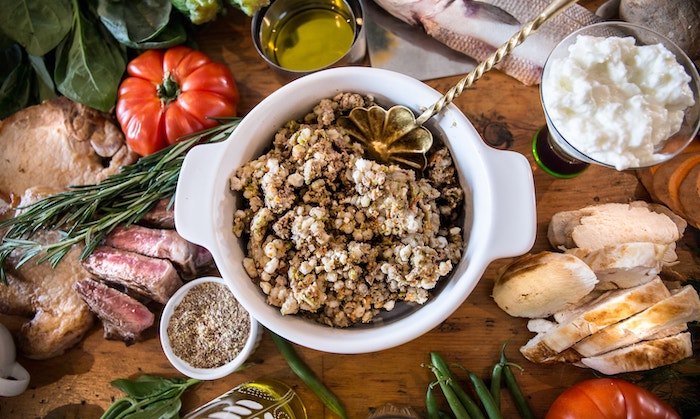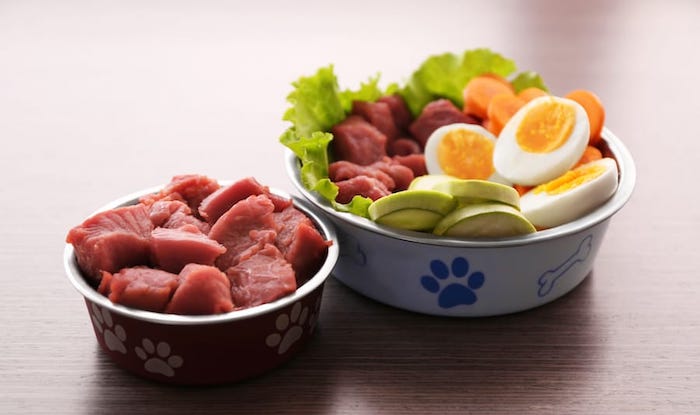Food and dietary habits often spark heated debates from every side of the argument. The same is transferred to the best type of dog food for dogs. There are some that believe in grain-free diets and others that are staunch believers in the raw and ancestral meals.
What we are here to discuss today is not how one type of food is better than the other, but the benefits each kind provides to help you make an informed decision about which is best for your pup’s individual needs.
Contents
Canned/Wet Dog Food
Canned dog food is perceived to have a more potent and delectable flavor compared to bland kibble. They are great for picky eaters since they come in a wide range of flavors and can be a real lifesaver as a food topper.

Unfortunately, wet dog food can be pricier than a kibble diet, which leads many dog owners to use it as a supplement or food topper rather than a meal on its own.
The texture of wet canned dog food is also more appealing to dogs and can actually help them regain interest in their food. Not only that, the softer wet dog food is a great alternative for elderly dogs who may be missing some teeth or for those who suffer from an illness.
But just like when you and I eat human food, the stickiness and moisture of the wet food can lead to more dental issues.
To avoid this, we would suggest consistent brushing of at least 4 times a week and to bolster your cleaning efforts with dental treats, chews, and toys.
Speaking of moisture, the moisture content in canned dog food is significantly higher than dry dog food so don’t be alarmed if you see a decrease in water consumption.
Kibble/Dry Dog Food
Dry kibble, otherwise known as dry dog food, is the most common dog food on the market. The formulas chosen to create these recipes offer a well-balanced diet (if proper ingredients were used) and also blend together all the needed micronutrients.

They can be found in all dog food stores and supermarkets and can generally last for quite some time. If you were to go on a trip, doggy kibble is easily packed and transported without making a mess.
However, the downside to these little bites of goodness is if the ingredients were not properly sourced, the kibble could contain fillers, harmful additives and by-products, which are harmful to a dog’s health.
Another issue would be allergies. Dry food causes more allergic reactions within dogs, but luckily there are grain-free and limited ingredient diets that can minimize this risk.
Kibbles are also less likely to stain your dog’s teeth, which would require less cleaning on your part. It can also help prevent plaque and tartar buildup over time! But since it is dry, you need to make sure you always have water accessible for your pooch.
Fresh Food
Fresh food is a new and, in our opinion, lasting trend that has hit the market. It’s basically cooking your dog’s unique meals with ingredients you can find at the supermarket. There are many ways to do this and many types of ingredients to use, but for beginners, we would suggest going for fresh dog food services as they utilize expertise from professionals to build a nutritional profile for your pup.

Since you or the service get to pick exactly what goes into each formula, the recipes are also balanced and well-rounded. The macro and micronutrients can be customized and since you know your dog best, you can pick all the things he would like to entice him!
Fresh food is fresh, which makes it higher quality and more nutritious than processed canned foods or kibble. It can take some time to get the recipe right and you may need to opt for delivery service if you don’t do it on your own, but even for the higher price, the health trade-off is well worth it.
The control fresh food allows you to have makes this type of dog food the best option for canines with special needs. We’re talking about those suffering from illnesses or ones that are extra sensitive. Plus, even the finickiest eaters will never tire of homemade goodness.
We would say the only risk is not providing enough nutrients in each recipe, which is why going with a vet certified fresh food service is best. Also, fresh food tends to have a shorter shelf life, which means your pooch needs to consume it all by a certain date. But that shouldn’t be a problem with how delicious these meals can be!
Raw Food
Then we have the raw diet. The raw diet is based on the belief that dogs should consume what their ancestors did. Their ancestors, which are wolves for the most part, fed on wild animals, which then bred the raw diet concept.

With raw food, your dog is getting the freshest food right from the source with zero processing. This guarantees the highest nutritional value, which results in healthier, skin, teeth, organs, and digestive systems. Some dogs who are sensitive to processed foods have taken well to the raw diet.
But nothing is this perfect, because raw food, just like home-cooked fresh meals can cost a pretty penny. This is especially true if you only choose high-end meats. Otherwise, your dog could be at risk for E. coli, salmonella, and more. Another issue is a raw formula may not be balanced. There are no additional vegetables, fruits, and vitamins and minerals in meat alone, which would require you to supplement a raw diet.
Conclusion
If you are looking for the best dog food for your small dog, head on over to Treehouse Puppies for some great options. There you will find fresh, raw, wet, and dry dog food suggestions that any pup owner will find useful
If your dog has a cast-iron stomach, he will be lucky enough not to suffer from any loose stools or other ill effects if you wish to experiment. For those with sensitive pups, look into a fresh or raw diet that can hopefully help curb the problem.
